Flowers for a flower bed: which ones to choose and how to care?
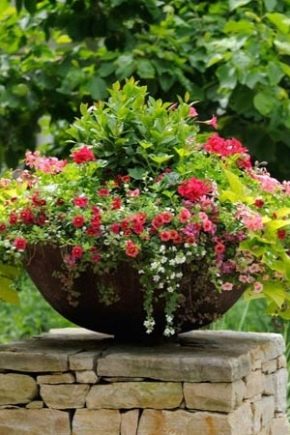
There is more life in the rapidly fading petals than in centuries-old soulless blocks of granite. The deserted courtyard involuntarily conjures up thoughts about improving the landscape design. A beginner who decides to organize a small garden with his own hands is faced with the questions of choosing flowers for a flower bed and caring for fragile beauty.
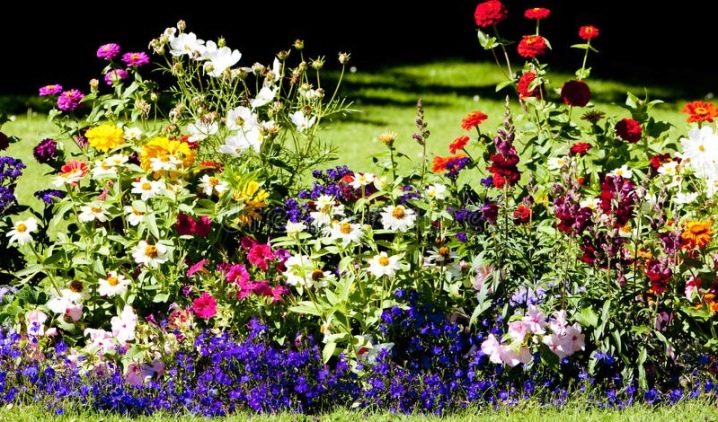
Peculiarities
The main goal of a novice gardener is to create a cozy corner of a picturesque garden. To implement this idea, various ornamental plants are used to decorate flower beds. Perennial plants that require less maintenance are the ideal companion. They will provide a permanent decorative effect.
However, it is not recommended to start the selection of plants immediately, since first you need to determine the technical characteristics of the flower bed or flower garden:
- features of the local landscape... It is necessary to determine the individual design of the flower garden. Hills can be used for creative ideas, and small pits can be used as a natural flower bed. It is also possible to cement them. The latter is acceptable when creating a small pond with decorative water lilies;
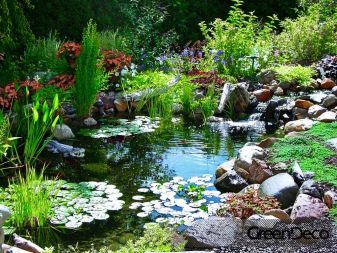
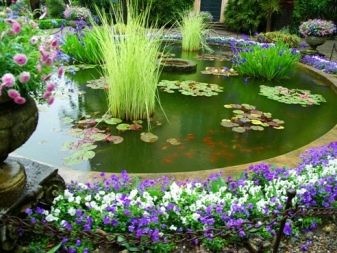
- relief elimination... For perfectionists who decide to start building on level ground, it is recommended to level the site in order to avoid unpleasant consequences in the form of earthen slopes;
- the size of the occupied territory... It is necessary to draw up a plan of the garden plot in advance, calculate the number of plants. For example, not taking into account the area of the paths, you can get lost in the green wilds;
- the location of the future flower bed in relation to sunlight... For many shade-loving plants, constant direct sunlight is destructive. Flowers of this type require a slightly darkened planting site.
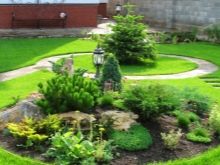
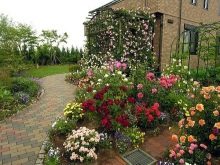
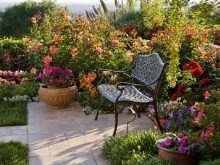
A spectacular and vivid image is created by combining a variety of colors and landscape objects. Optimum perception is possible with the correct calculation of plant growth in relation to the point of view. A profitable demonstration involves planting small flowers near roads with a gradual increase in the shape and size of seedlings to remote areas of the territory.
It is recommended to take a closer look at the combination of perennial plants. With an inappropriate combination, you can inadvertently destroy the created image. To avoid unpleasant surprises, you must first calculate the flowering period, take into account the shape, color combination of petals and leaves, and plant growth.
When operating the elements, it is recommended to achieve maximum harmony between the architecture and the adjacent landscape solution of the site.
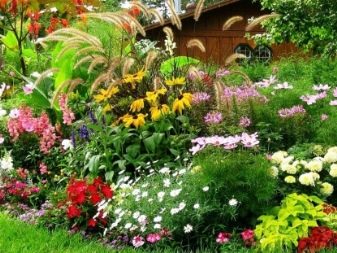
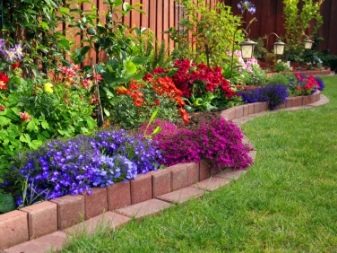
Where to begin?
Before taking on the design, the site owner must properly evaluate it. Even if the landscape seems unsuitable, in any case, it is possible to "blind" the picturesque landscape. First, you need to clear the site, first taking into account the relief, windiness, soil and illumination. Despite the fact that many plants are unpretentious to care for, everyone must follow the rules for choosing the optimal soil for planting seedlings.
For a flower bed, fertile soil is needed, which will provide a long flowering period.... It is necessary to choose a place for planting right away, since a transplant is always a painful procedure for flowers.After the layers of earth are covered and the flowers are planted, the plants should be separated with fences.



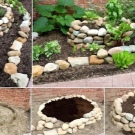
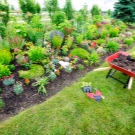
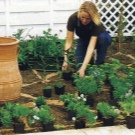
These actions are necessary so that the seedlings do not grow, do not "fight" for the territory among themselves. It is recommended to plant sun-loving plants in open areas. In the shade, they will give few inflorescences, stretching upward. Stunted ones require additional watering. This must be taken into account when planting plants with each other.
In order not to get confused when planting, you should draw up a planting schedule. Such actions will help not to get confused and will provide the effect of constant flowering of the site. For example, experts recommend planting bulbs in October, while nasturtiums and marigolds require planting in early spring.
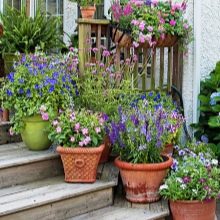
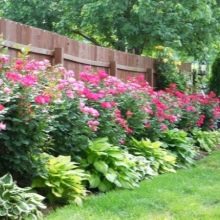
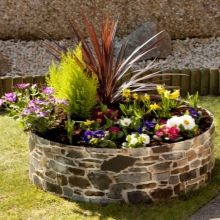
In summer and autumn, it is best to spray the plants with pest control agents. Also, you can not overdo it with top dressing. Nitrogen fertilizers promote active growth of greenery, interrupting the flowering period.
Landscape design trends
Initially, it is necessary to choose a landscape or classic stylistic direction. The latter implies the strict subordination of plants and decorative elements to a single creative thought.
The approach requires laborious maintenance, as all plants need timely trimming. However, the effort pays off with the visual expression of a sophisticated style that has the following characteristics:
- clearly planned area of the site;
- harmonious use of geometric shapes in the cutting process;
- the dominance of greenery over flowering plants;
- perfectly flat terrain.
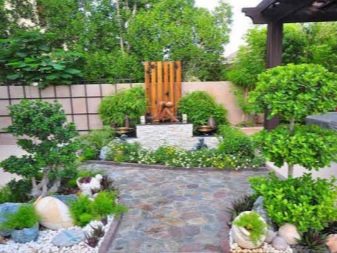
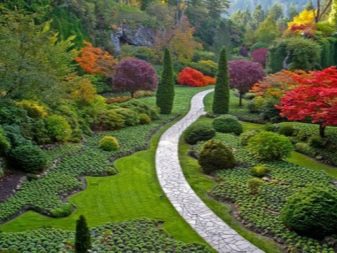
However, for nature lovers, there is a landscape style - the exact opposite of the classics, as close as possible to natural design. Lush vegetation will grow near the house, endowed with asymmetry and smooth features.
The main features of landscape design are expressed as follows:
- free distribution of plants;
- the natural form of shrubs and trees;
- an abundance of flowering and fruit seedlings;
- flower arrangements, collected in uniform groupings according to the compatibility of shades and the similarity of care.

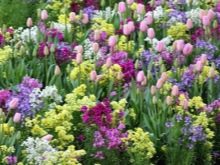
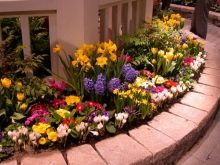
The landscape type does not require additional costs and efforts. The big plus is that it can be used even in a small area with uneven terrain.
Popular in the front garden
Finding the perfect color combination for your garden is not an easy task. Chaotic recruitment and erratic landing will not provide a beautiful landscape. The main thing is not to get confused, but to look through the list of popular plants for flower beds. Based on the detailed instructions, it is possible to achieve a picturesque painting in the courtyard. It is enough to study the gardener's sowing calendar from the Superdom portal to understand when and how to sow flowers for a flower bed. For trial experiments in the first year, it is recommended to plant annual plants... They will also appeal to connoisseurs of diversity.
With simple landscaping of the territory, unpretentious flowers are irreplaceable. Taking care of them does not require a huge amount of time and effort, so this is an excellent choice for those who wish to decorate the landscape with their own hands.
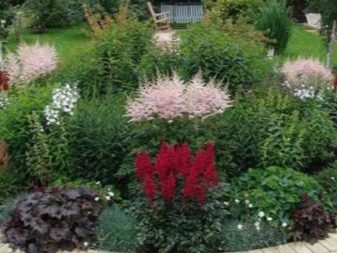

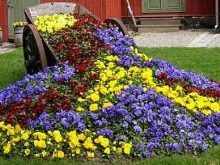
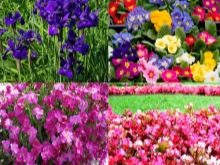
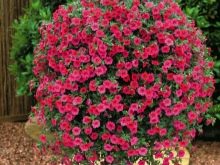
Annuals have a number of advantages in a variety of choices:
- solar nasturtium it is thermophilic and prefers bright places, but it does not survive the transplant well. Large seeds are able to overwinter in the soil, which guarantees the appearance of green shoots next year. The flowers have a delicate, pleasant aroma that exudes sweet calmness. They can be grown both in flower beds and in pots in open areas. The beneficial properties of the medicinal plant are also pleasantly surprising. All parts other than the roots are completely edible;
salvia grows in areas rich in sun and moisture. In addition to the above parameters, she does not need anything else to decorate the flower bed with red cone-shaped inflorescences.For those who prefer a unique style, Royal Salvia is the best choice. Orange flowers will complement the view with a hue of human blood, which can change depending on the time of day;
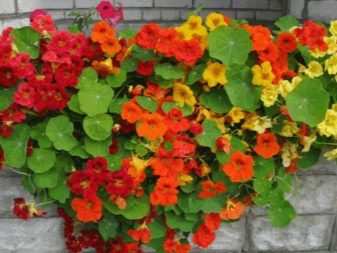

- petunias dazzle with a variety of shades. The delicate buds of the shape of small gramophones are surprising with their resistance to direct sunlight. It is enough to scatter a small amount of seeds on the ground - and this will ensure their rapid growth and development. Petunia is planted in early June on open ground, since repeated frosts can destroy it;
- gatsaniya Is a colorful chamomile native to South Africa. Differs in large size. Flowers are combined with black soil, brightening up the dark color of the soil. In most cases, they are used to create intricate patterns in combination with low-growing plants, as well as as an object for decoration for paths. There are annual and perennial varieties for creating garden compositions in open areas;
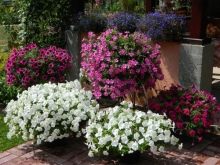
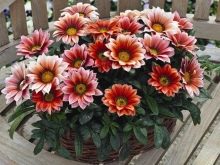
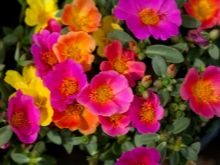
- purslane is a natural carpet runner. The creeping plant reproduces by self-sowing, so that it does not have to be planted the next year. Optimal for sowing is the end of March, when there is already enough sunlight outside. Unpretentious seedlings do not need watering and feeding, preferring dry or sandy soil.
More experienced summer residents prefer to plant perennial plants, the flowering of which begins with the first spring warmth.
The early period is characterized by the appearance of snowdrops. Then they are replaced by spring compositions based on tulips, iris and hyacinths.

The chaotic variety of colors can delay and frighten for a long time with a wide choice:
- periwinkle proudly denies artificial watering after planting. It can be left unattended. Soon, the periwinkle runs wild, expanding with a decorative carpet. Dense areas can be trimmed to shape;
- often found in gardens aquilegia, the name of which is popularly called the "flower of the elves"... Delicate buds bloom for a long time: from the beginning of spring to the first blows of frost. The petals are predominantly bluish. It grows in the form of a shrub, forming both low and tall vegetation. For the development of aquilegia, a soil equipped with a good drainage system is needed, and partial shade, where the flowers acquire a richer color;


- lavatera known as "wild rose" with large buds reaching 10 cm in diameter. The flower lives up to its name, because it is picky about the soil, drought-resistant and adamant under strong winds. Planting occurs at the end of spring. In cut form, individual specimens are able not to lose their decorative appearance within a week. The petals range from yellow to purple;
- pelargonium Is a common house plant that repels insects. Better known as geranium, it quickly settles into new terrain, growing and multiplying easily. The perennial light-loving plant is unpretentious in care, but it blooms in well-drained soil. At the beginning of spring, it needs fertilizing with potassium content;
- speaking name "Snapdragon" easily spread thanks to Greek mythology. Flowering occurs in June, lasts until the first frost. At first, seedlings grow slowly and sluggishly, but after the first period, a lush flowering begins, increasing the abundance of buds from year to year;

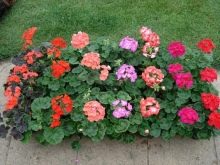
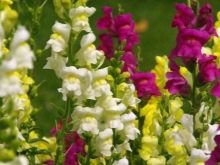
- castor oil plant does not tolerate landing. Saplings take a long time to get used to the territory, even with top dressing, preferring to grow in moist open areas with a high level of humus. The plant does not like freezing, therefore, it is possible to plant seeds only in mid-May;
- lobelia gives some charm and charm to the landscape from the first days of summer to the end of autumn. The plant is covered with a variety of buds in delicate shades, ranging from purple to sky blue. The flower is finicky.It grows only on loose, not too fertile soil with regular watering. The place should be well lit. Lobelia needs constant mineral feeding. Planting should be done at the end of February;
- shaved characterized by bright petals, colors range from pale pink to blue. The flowering period occurs in mid-spring and lasts until the end of summer. The plant retains its foliage during the winter season, making it incredibly resistant to severe frosts. Aubrieta is unpretentious in care, rarely when additional feeding is required.

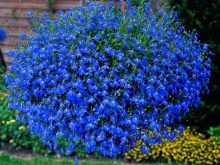
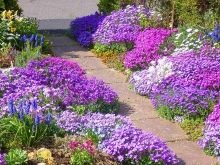
Perennials have gained popularity because they don't need to be planted every spring. Such flowers are perfect for creating permanent landscape design. When choosing flowers for a mixborder, it is also necessary to take into account the parameters of the plants. Flowers with the largest and brightest buds should occupy the central position.framed in decorative greenery and modest inflorescences of short stature
... Tall plants are planted in distant flower beds at the periphery of the site or in the center of multi-layered flower beds.
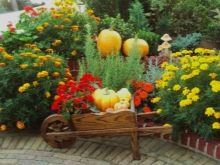
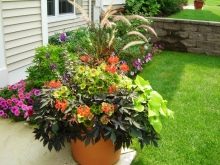
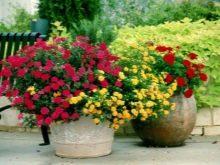
Autumn
Autumn is the end of the flowering period for most perennials. During this time of year, foliage and cereals provide the decor. In order not to lose summer bright colors, you can plant autumn compositions... The leading position is occupied by an annual plant, the name of which is aster... Flowers of bright colors grow from late spring to late autumn, but the advantage lies not only in color and flowering duration, but also in large branched inflorescences. In height, asters are combined with stunted and tall plants, as they have a wide range of varieties.
Chrysanthemums will be an excellent helper... Their flowering season begins in August and lasts until the first frost. The color scheme excludes only blue, but in the fall they use mainly red shades so as not to disturb the natural seasonal look.
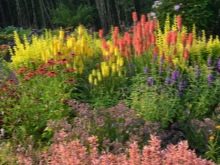
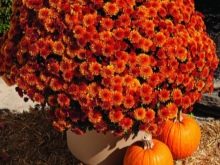
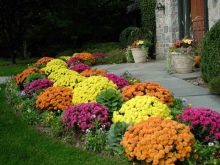
Perennial dahlias bloom in warm colors. Lush inflorescences delight the eye from the end of July until the first blows of frost. The only drawback is that they need to be covered for the winter, because the tubers die at temperatures below zero degrees.
In order not to face a headache when drawing up the necessary combinations, it is recommended to use a ready-made scheme, or select individual copies from it:
- aconite of Karmikhel;
- reed grass;
- phlox;
- tricirtis;
- zinnia (majors);
- marigold;
- helenium;
- lemon verbena;
- taper;
- monard.
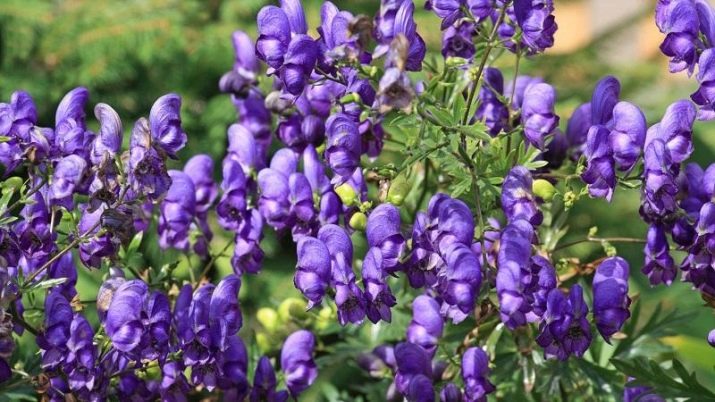
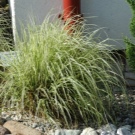
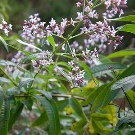

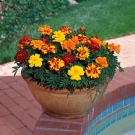
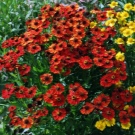
Autumn compositions are combined with natural colors that range from golden to burgundy.
Tall plants should not be taken. They create an image of lush vegetation, which does not look harmonious during the seasonal period of general preparation for sleep. The collection of low colors fully realizes bold ideas in curious patterns.
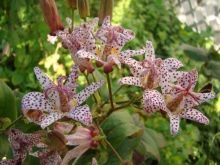
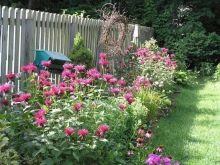
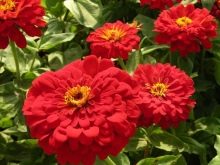
Shade-loving
Owners of areas lost in the shade have a hard time choosing a flower arrangement. In front of them is a wide assortment of plants that prefer open space, but die in the shade. However, the problem of landscaping is solved by a list of shade-loving plants, the beauty of which is not inferior to the sun-resistant species:
- lupine is a powerful bush, reaching 150 cm in height. Finger petals are collected in a long rosette, pleasing to the eye for several seasons;
- dicenter - undersized seedlings with carved petals, resembling folded bird wings. Planting is done in late spring or early fall as part of a seasonal arrangement;
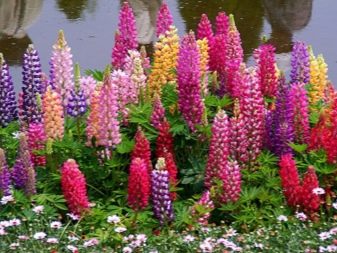
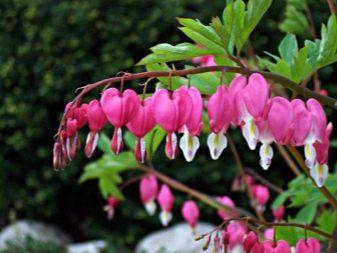
- astilba possesses long fluffy inflorescences that do not require careful supervision. The plant does not need abundant watering, however, if the owner of the garden wants to see abundant flowering, then astilba should be watered once or twice a week;
- saxifrage echo their name, preferring to grow in drained poor soil.In partial shade, they form a "pillow" blooming with simple, pleasant inflorescences during the summer. Despite the fact that saxifrage grows abundantly in the sun, they thrive in the shade without requiring additional care.
Evergreen varieties of plants, flowers with lush leaves will bring a variety. The host will appeal to lovers of lush greenery. Wide leaves of bright colors cover the ground, retaining moisture, so the plant does not need frequent watering. Woodruff will amaze with the unusual shape of the foliage, while the symphiandra will make a picturesque pair with it. Its carved buds look exotic in combination with lush vegetation.
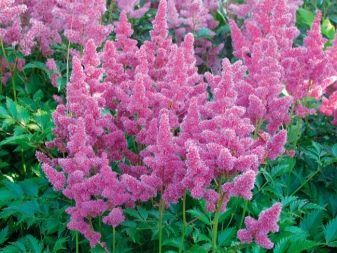
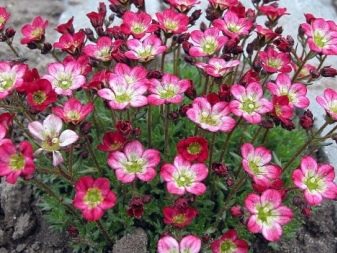
Undersized
Thanks to annuals, each year gives the opportunity to experiment with flower arrangements, creating new picturesque flower beds. The most popular petunias in this matter, however, there are many annual plants that are not inferior in merits:
- Iberis and Ageratum... Unpretentious shoots create flowering carpets, often decorating an alpine hill. They prefer to grow in open areas among other plants with which they get along well;
- low-maintenance culture from pansies can grow in sunny and semi-dark areas, but they are greedy for moisture, requiring constant abundant watering;
- forest forget-me-not pleases with the flowering of delicate buds of heavenly shades from late spring to early autumn;
- at night will help hesperis... The night violet not only blooms in the moonlight, but also has a subtle scent that covers the entire garden area. Prefers moist soil in shady places.
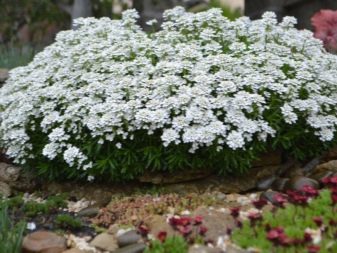
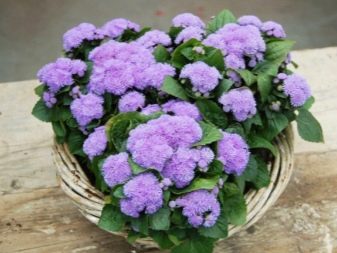
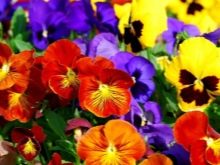
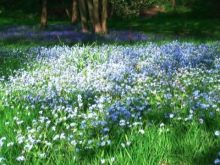
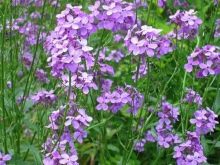
However, annuals are usually rarely lush. To prevent the plot or flower bed from looking scanty, it is worth trying to combine "one-year-olds" with low-growing perennial seedlings. A big plus is also the fact that perennials are able to create an unforgettable composition for a long time.
Among the favorites of garden plots, the following types are distinguished:
- arenaria crimson... The bloody carnation blooms in July and continues to bloom until mid-October. Prefers to grow on sandy soils, color with buds of white and pale pink shades;
- sea alyssum prefers sunny areas with variable irrigation. The color of the buds is represented by yellow-pink paints. The plant survives at a temperature of -11 degrees, which indicates extreme hardiness to climatic conditions;
- sage able to please the eye throughout the summer. It grows well in shaded areas without the need for constant care;
- phloxes bloom for more than six months in the form of shrubs with spherical buds.
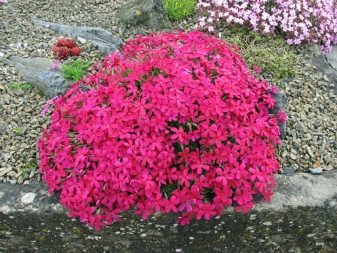
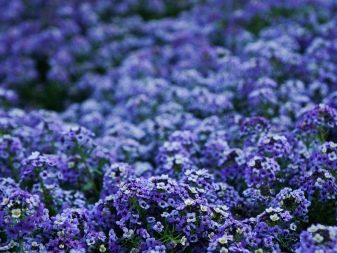


Experts recommend planting nearby only those plants for which the same conditions for growth are necessary, for example: the same soil and type of illumination.
Vertical
Today, the use of vertical gardening has become relevant. In a short time, it is possible to create a real masterpiece of a picturesque corner of nature from a soulless architectural stone. The project can be done by hand. It is only important to have the necessary support - trellises, cords or columns, and the desire to care for the climbing seedlings. For landscaping, it is necessary to use frost-resistant and unpretentious creepers. The most common are liana seedlings.... They are able to grow to a height of 25 meters, while creating a dense hedge.
A special place is occupied by maiden grapeswhich blooms in the fall. It is resistant to frost, does not require careful maintenance, preferring to grow on trellises. Thanks to the tendrils, the grapes cling to any vertical structures. There is no need to make additional structures for it.



Honeysuckle, clematis and actinidia are used for planting tree trunks and supporting structures, but in no case should hops be recklessly used. It is unpretentious and grows quickly, so much so that it is difficult to control it. The "aggressor" prefers to be hammered into cracks, and its root system destroys the foundation of the building.
Non-blooming
So that summer crumbs do not look too colorful, the composition is diluted with non-flowering plants.
So, the following types are perfect:
- spicy herbs - basil and mint... They will serve not only as an object for decoration, but will also be useful in cooking. They are unpretentious, create good combinations that can compete with bright petals. The pleasant aroma of spices will brighten up the sharp odors of flowering plants;
- decorative deciduous plants choose carefully, as not all greens are able to survive the changes in the local climate. It is advisable to start with shrubs that do not require careful maintenance. Evergreen boxwood and barberry will help train your hand due to the fact that they tolerate adverse conditions and strong pruning well;
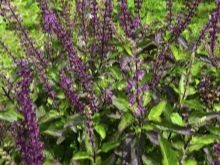

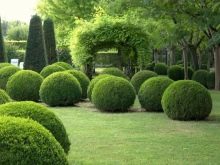
- reed - an ornamental grass that perfectly tolerates the dry season, is able to survive on rocky soil. Creates a unique view of the alpine slides;
- impera demanding for watering, but compensates for this minus thanks to the beautiful combination of red-green foliage. The color remains throughout the year.
For large areas, it is important to start planting with conifers.th, playing an important role in the landscape. They do not change throughout the year, which looks spectacular against a snowy background. Small trees act as a frame, making it possible to grow around any composition. When evenly distributed, the plants will become the center of the landscape design. Dwarf junipers and decorative spruces are often chosen from conifers.... They will nicely decorate the alleys in the blooming garden. Usually they are planted in rows like a hedge. A big plus is the variety of shapes: from round to columnar, which creates a kind of partitions in the garden.


Conifers are easy to trim when needed. These procedures will not affect their growth and development. Dwarf plants are recommended for use as curbs. For example, spruce and cypress trees are good for fencing off a picnic area. It is recommended to plant coniferous trees on a large area, which will create shade and coolness in the sultry summer.
What plants are combined?
When choosing a composition, you must be guided by your own taste, following the necessary recommendations to create the perfect garden:
- the foreground should always be occupied by low-growth plants. For example, chrysanthemums go well with phlox, which create the necessary background. Pansies can draw attention to the edges of the alley;
- do not plant small flower beds with a lot of flowers. The struggle for soil and light can lead to the death of some plants, and this is a waste of the effort;
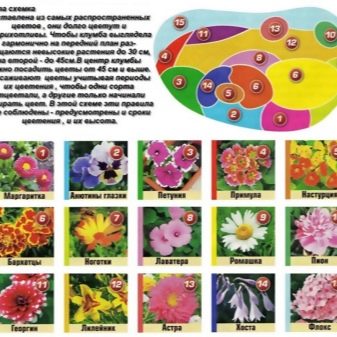
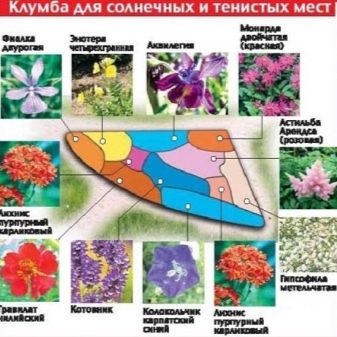
- tall grasses are difficult to combine. For this purpose, it is easier to choose a composition of undersized greenery;
- in the garden, a combination of non-flowering seedlings with abundant inflorescences of different types is necessary. Coniferous species will perfectly dilute bright colors that look inappropriate in combination with each other;
- harmonious combinations should be selected. For example, purple phlox can be planted with red peonies.
In case of complete confusion in terms of choosing a composition, you can rely on the recommendations of experienced gardeners, who have made combinations of the most popular flowers with each other or with other plants.
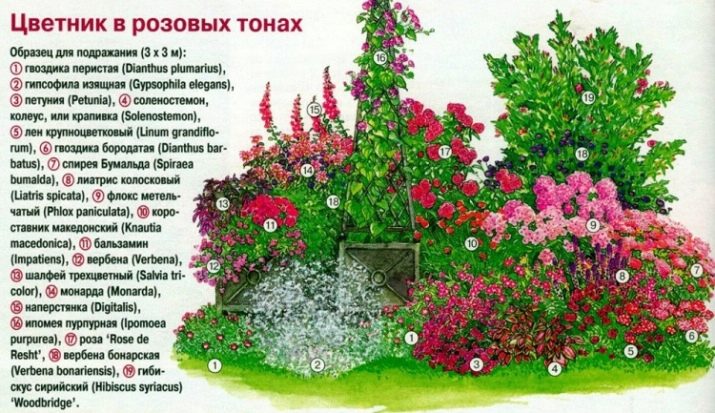
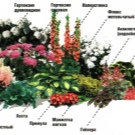
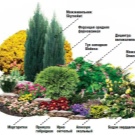
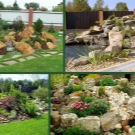
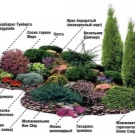
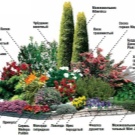
The femme fatale of a blooming garden
The queen of landscape design - a rose - can become a decoration of any garden, but sometimes there is a feeling that small groups of thorny stems look lonely and poor.Red buds create a classic composition with lilac and blue colors.
The ideal combination involves a combination of lilac, tamarix, snowberry and sea buckthorn with roses. The variegation will help to "dilute" conifers, the most suitable of which are thuja and juniper. The ensemble with evergreens will be mahonia and cotoneaster.



A fragile combination of tenderness and beauty
Lilies can transform any garden by adding shades of all colors: from snow-white to bluish-black. Before collecting a bouquet for a flower bed, you should select groups of plants by flowering time. Lilies acquire an aristocratic and dominant status among other plants, so the "suite" should be more modest. For example, gentle colorsThey look great with peonies, forming a symbiosis. Lush peony leaves protect the soil from drought, requiring similar care conditions.
In this respect, irises do not go well with lilies.... The latter require abundant moisture, while irises cannot be watered after the flowering period. The same goes for roses, which are fiercely competitive in the battle for attention. A spicy composition is formed in combination with hosts that grow well in the shade. They are comparable in flowering time to daylilies, so they will complement each other throughout the season.




For a harmonious landing, for which you do not need to make alterations, you need to choose a central view. It should be used as a starting point when forming a flower arrangement.
Marigold
A flower bed of marigolds will give free rein to imagination in combination both between varieties of one plant and with other representatives of the flora. Tagetes is an unpretentious plant, not demanding either to watering or to soil. It is only recommended to select the same flowering period. - from the end of June to the first frost.
Marigolds are more suitable for small flower bedswhere the loose center should rise above the densely planted periphery. Tagetes of any color look great against a white petunia background.
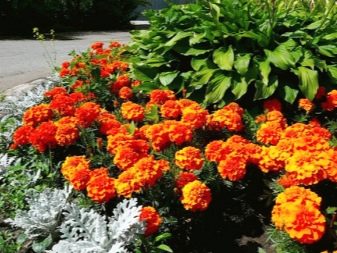

The composition can be composed of several tiers like an alpine slide. In this case, the center of the flower bed is occupied by a dwarf coniferous plant, for example: a rounded juniper, from which purple and white petunias will fan out. The lowest level will be occupied by marigolds, diluted with a silver color.
Flowers for timid natures
Chamomile blooms at the beginning of summer, from which it is easy to conclude that the simplest combination will consist of wildflowers. Blue bells and red poppies will remind you of childhood with a fun combination. Provided that the daisies take a central position in the flower bed, you should decorate them with decorative ferns, but when choosing an exotic composition you need to be guided by unnatural images: recalcitrant orchids and aggressively colored roses will play with picturesque colors against the background of modest daisies.
The only axiom is: always choose a green background from non-flowering plants for daisies. They will not let fragile colors get lost in the riot of other colors.

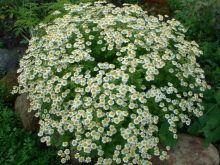

Gladioli - flowers spawned by a gladiator's sword
Capricious gladioli create splendor on their own, drawing the eye to the combination of picturesque petals on the lush green of the leaves. However, their flowering period is quite short, so you should pick up flowers that will:
- accompany the birth of buds (daffodils and tulips of the required color);
- to strengthen the position of gladioli during the flowering period (lush peonies);
- to mark the end of the season (combined with hydrangea).
Dahlias should not be planted nearby, as large inflorescences will compete with each other. Another thing is the background of evergreen shrubs, lawns or conifers.The pastel colors of some gladiolus varieties will favorably emphasize the bright petals of other seedlings, while the scarlet flowers stand out with dignity due to the white tones, and the chocolate buds will look good with cream shades.

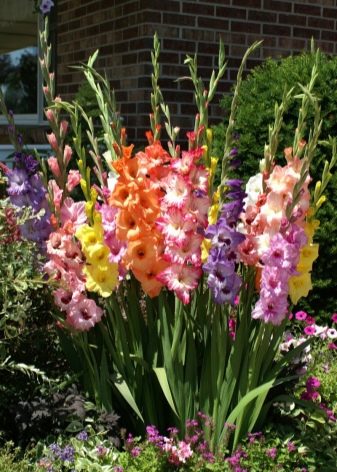
Begonia - Aphrodite of the garden
Begonia manifests itself in a voluminous mixborder over a large area. Unfortunately, you can't swing like that in the garden. In a flower bed and alley, these flowers will perfectly play the role of decoration in the foreground. Begonias will perfectly decorate a flower garden in the form of a low hedge.
In combination with cineraria and lobularia of silvery-white shades, different colors of begonias will sparkle in a new way. Flowers can be combined with each other, as well as with other annual plants.

Flower arrangements can not only act as a duet, but also win in more complex combinations. It is only necessary to choose the best flowering period and harmonious shades of petals, and this requires creative ideas and a creative approach. A few small experiments will turn the garden into a chic place to relax
Design
Do-it-yourself curious garden ideas can decorate an inconspicuous garden. Even a plot purchased with plantings can be corrected by experimenting with shrubs, rock gardens and water areas. The latter will give the site individuality and a unique look, being an additional source of moisture.
The simplest solution is to create a small pond by digging a pit of a certain size.... Next, you need to fill it with cement, strengthening the edges, providing the necessary waterproofing. At the end, it remains only to fill the mini-pond with water, and equip it with decorations to taste. The shore can be overlaid with cobblestone or gravel, planting plants that require excess moisture.


A decorative waterfall, which is recommended to be refined in an oriental style, can serve as a creative idea. Also, on a large territory, it is possible to equip a cozy garden with a fountain and a rock garden slide in the center. The drawing of a dry stream of fine gravel and pebbles will add elegance.
Several large natural stones that remained after harvesting can be stacked on top of each other in order to create a rock garden. It is possible to fix their position with cement mortar. The remaining gaps can be filled with fertile soil, finally by planting ornamental plants.

Inspirational flower beds: examples of work
The original idea is to create palmette from fruit trees. A hedge is created by excising the crown of the seedlings. With this approach, the trees will grow in width, intertwining with each other with branches. Fruit trees growing in breadth absorb more sunlight, which increases their yield.

Palmettes visually increase the area of the site, blending harmoniously with ornamental shrubs.
In the next video, you will find a master class on creating a small flower garden.







































































































Good selection.
The comment was sent successfully.